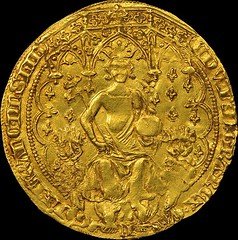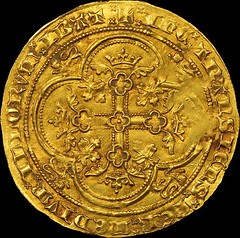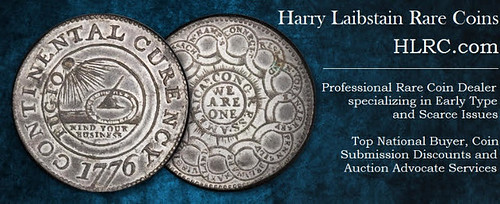
PREV ARTICLE
NEXT ARTICLE
FULL ISSUE
PREV FULL ISSUE
TYRANTS COLLECTION ADDS 1344 EDWARD III DOUBLE LEOPARD
NGC reported on June 20, 2016 that it had recently graded a rare English coin, a 1344 Edward III “Double Leopard”. -Editor
 
Numismatic Guaranty Corporation® (NGC®) has certified a 1344 Edward III “Double Leopard” that recently sold privately for the highest price ever paid for an English coin. Graded NGC MS 62, it is the only example of this important gold coin in private hands. The Double Leopard, named for the two leopards featured on the reverse, was struck in 1344 as England’s first large-sized gold coin. Until that time English coinage was exclusively silver save for a small number of tiny gold pennies struck in 1257. Gold coins needed for domestic and international trade had to come from other European countries such as France and Italy. Edward III decided that England needed its own gold coins and in 1344, England then issued gold coins in the denominations of double-florin (double leopard), florin (leopard) and half florin (half leopard). The double leopard weighed 108 grains, or just under one-quarter of an ounce, to mimic the French florin then in common use. It was assigned a value of six shillings. The gold leopard coinage was extremely short-lived. Struck between January and July of 1344, they were quickly abandoned in favor of the gold noble, which was a bit larger than the double leopard with a weight of 138.46 grains and a value of 6 shillings, 8 pence. The gold noble gained popularity and on August 20, 1344, the gold leopards were officially demonetized. Few gold leopards were struck and it is likely that many were melted. In fact, the double leopard was thought to have been lost to time until schoolchildren found two examples in the Tyne River in 1857. Both pieces later became part of the British Museum, where they currently reside. A third example—the piece recently graded by NGC—was discovered by a metal detectorist in southern England nearly 150 years later in 2006. It was subsequently sold at auction that year for the equivalent of $850,000, the highest price ever paid for a British coin at the time. Ira Goldberg, co-owner of Ira & Larry Goldberg Auctioneers, was the under bidder at that auction, finally dropping out when the coin reached that astonishing price. A decade later, however, Goldberg was again presented with the opportunity to acquire this phenomenal rarity. Goldberg seized the moment and purchased the coin for a client who is building a fantastic collection of important coins from England and other countries. The purchase price was not disclosed but Goldberg says that “it easily establishes this coin as the most valuable English coin of all time.” The NGC MS 62 Double Leopard is now part of the Tyrants Collection, a fantastic assemblage of English and other world rarities.
"The Tyrants Collection" sounds like a great name. I'm curious to know its scope, although I suppose the name is meant to
keep the owner anonymous. -Editor
To read the complete article, see:

Wayne Homren, Editor The Numismatic Bibliomania Society is a non-profit organization promoting numismatic literature. See our web site at coinbooks.org. To submit items for publication in The E-Sylum, write to the Editor at this address: whomren@gmail.com To subscribe go to: https://my.binhost.com/lists/listinfo/esylum All Rights Reserved. NBS Home Page Contact the NBS webmaster 
|